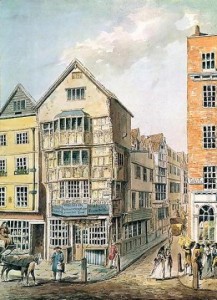 The ‘stormy latitude of the law’: Chancery Lane and street improvement in late Georgian London. Francis Calvert Boorman
The ‘stormy latitude of the law’: Chancery Lane and street improvement in late Georgian London. Francis Calvert BoormanUsing newspapers, plans, London guides and parish records, this article describes the arguments concerning improvement of the street environment in Chancery Lane, from around 1760 to 1815. This area of London was marginal to the great centres of Westminster and the City and, therefore, analysing its development challenges the standard binary model of the metropolis, generally used by historians of the late eighteenth century. The importance of local political conditions to the success of street improvement is examined, including the fragmented jurisdictions of local parishes and the popular association of Chancery Lane with the legal profession.
